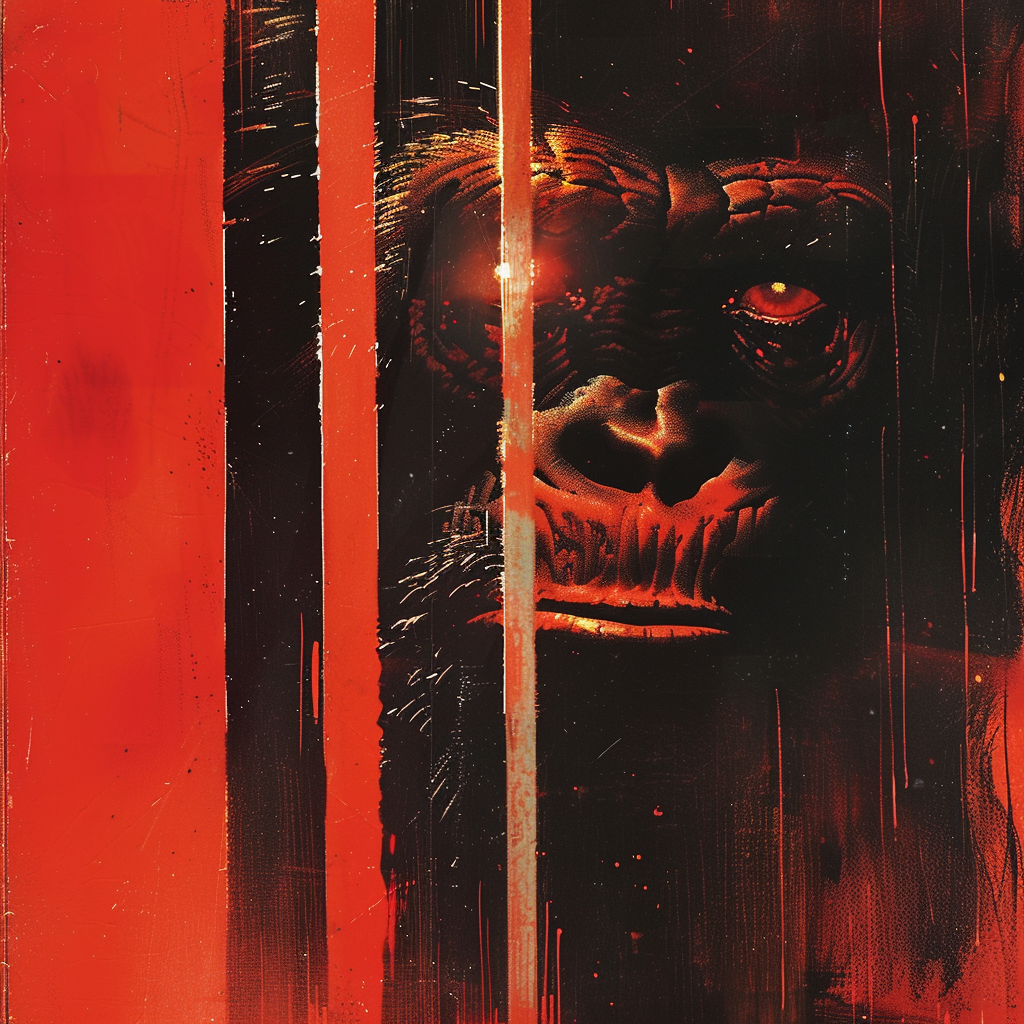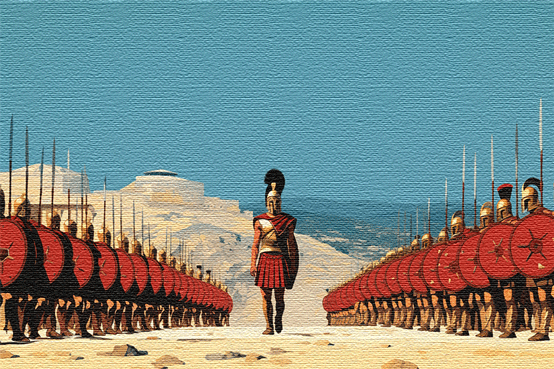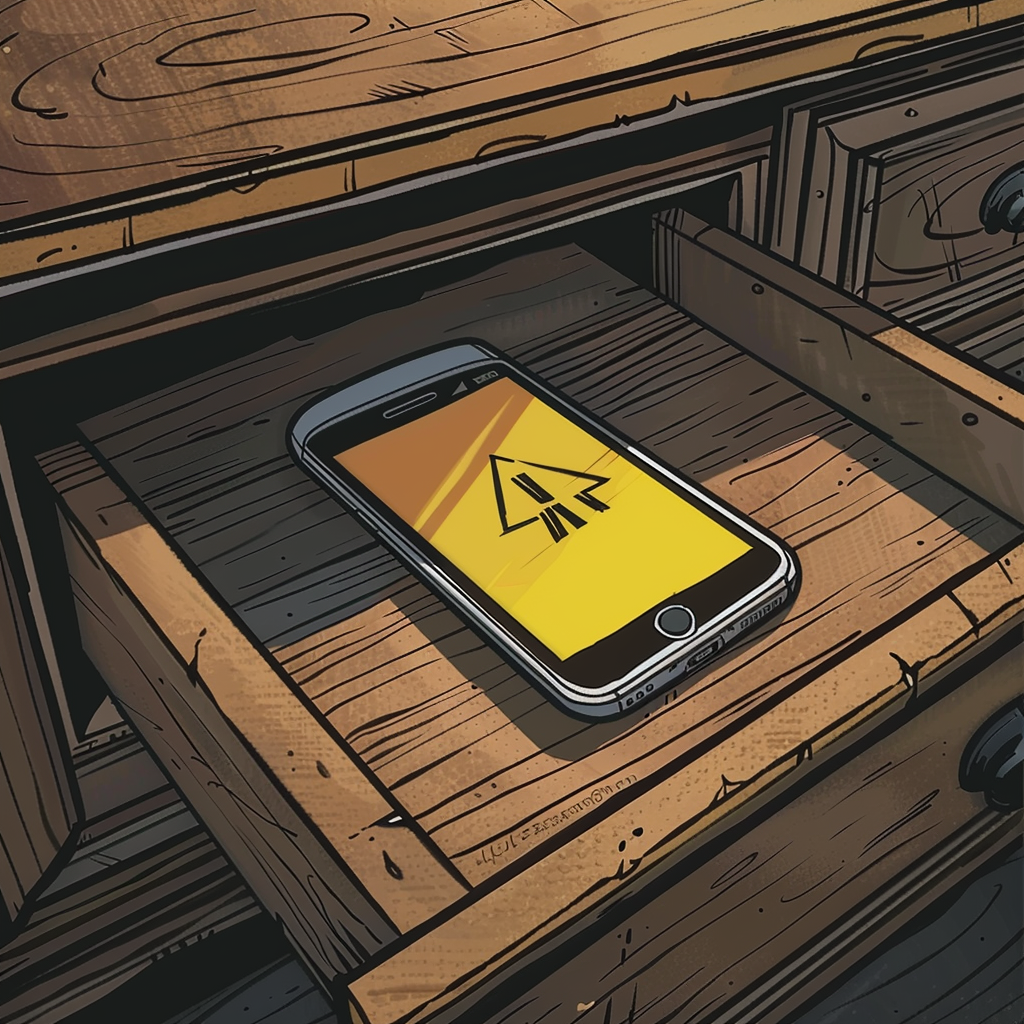
The Article Title
By First Last
June 17, 2024


The dark metallic figure jumped off the cover of the book. Steel thorns projected from its head, shoulders, and legs. What was it exactly? It looked like some sort of monster, robot-thing. I couldn't tell if it was a malevolent or benevolent character (or if it was a character at all). The creature stood from a prominent position and looked out on a 1600s-era ship navigating through a sea of grass. I thumbed over the worn paperback, entranced by the mysterious image. It was…strange. My mind struggled to imagine what sort of story this was—it looked far different than the spaceship crowded, Star Wars-knock offs I normally saw in the science fiction section. Hyperion by Dan Simmons— “THE HUGO AWARD WINNING NOVEL” a sticker on the front exclaimed. It looks a little too weird, I thought and placed it back on the shelf.
I continued to meander through the bookstore, exploring the history section, and leafing through biographies of familiar names. But I wasn’t really reading them, my mind still fixated on the enigma of the dark tinman from the cover of Hyperion. I was near the door, ready to exit, already running late for my next class at the University of Washington, but Hyperion pulled like gravity. Then I was at the cash-register. I purchased the book and quickly stuffed it into my backpack (weirdly embarrassed by the strangeness of the cover). I jogged off to the lecture hall through the dark, cold, rainy season of Seattle’s February. All the while I felt the weight of Hyperion bouncing in my bag.
I endured a lecture on Middle Eastern conflict, barely registering the professor’s dull ruminations on Israeli and Palestinian crimes while I counted the minutes until release. Class ended and I raced home, up to my room, closed the door, then ripped out the book and began to read.
A Section Heading Goes Here

The dark metallic figure jumped off the cover of the book. Steel thorns projected from its head, shoulders, and legs. What was it exactly? It looked like some sort of monster, robot-thing. I couldn't tell if it was a malevolent or benevolent character (or if it was a character at all). The creature stood from a prominent position and looked out on a 1600s-era ship navigating through a sea of grass. I thumbed over the worn paperback, entranced by the mysterious image. It was…strange. My mind struggled to imagine what sort of story this was—it looked far different than the spaceship crowded, Star Wars-knock offs I normally saw in the science fiction section. Hyperion by Dan Simmons— “THE HUGO AWARD WINNING NOVEL” a sticker on the front exclaimed. It looks a little too weird, I thought and placed it back on the shelf.
I continued to meander through the bookstore, exploring the history section, and leafing through biographies of familiar names. But I wasn’t really reading them, my mind still fixated on the enigma of the dark tinman from the cover of Hyperion. I was near the door, ready to exit, already running late for my next class at the University of Washington, but Hyperion pulled like gravity. Then I was at the cash-register. I purchased the book and quickly stuffed it into my backpack (weirdly embarrassed by the strangeness of the cover). I jogged off to the lecture hall through the dark, cold, rainy season of Seattle’s February. All the while I felt the weight of Hyperion bouncing in my bag.
I endured a lecture on Middle Eastern conflict, barely registering the professor’s dull ruminations on Israeli and Palestinian crimes while I counted the minutes until release. Class ended and I raced home, up to my room, closed the door, then ripped out the book and began to read.

The dark metallic figure jumped off the cover of the book. Steel thorns projected from its head, shoulders, and legs. What was it exactly? It looked like some sort of monster, robot-thing. I couldn't tell if it was a malevolent or benevolent character (or if it was a character at all). The creature stood from a prominent position and looked out on a 1600s-era ship navigating through a sea of grass. I thumbed over the worn paperback, entranced by the mysterious image. It was…strange. My mind struggled to imagine what sort of story this was—it looked far different than the spaceship crowded, Star Wars-knock offs I normally saw in the science fiction section. Hyperion by Dan Simmons— “THE HUGO AWARD WINNING NOVEL” a sticker on the front exclaimed. It looks a little too weird, I thought and placed it back on the shelf.
I continued to meander through the bookstore, exploring the history section, and leafing through biographies of familiar names. But I wasn’t really reading them, my mind still fixated on the enigma of the dark tinman from the cover of Hyperion. I was near the door, ready to exit, already running late for my next class at the University of Washington, but Hyperion pulled like gravity. Then I was at the cash-register. I purchased the book and quickly stuffed it into my backpack (weirdly embarrassed by the strangeness of the cover). I jogged off to the lecture hall through the dark, cold, rainy season of Seattle’s February. All the while I felt the weight of Hyperion bouncing in my bag.
I endured a lecture on Middle Eastern conflict, barely registering the professor’s dull ruminations on Israeli and Palestinian crimes while I counted the minutes until release. Class ended and I raced home, up to my room, closed the door, then ripped out the book and began to read.

Eric Davids served as an Intelligence Officer in the Marines. Since leaving Active Duty, he's focused on developing and deploying solutions to the climate crisis. He lives in Denver, Colorado.
More from
The Hart & The Cur
Copyright © 2024 The Hart & The Cur



